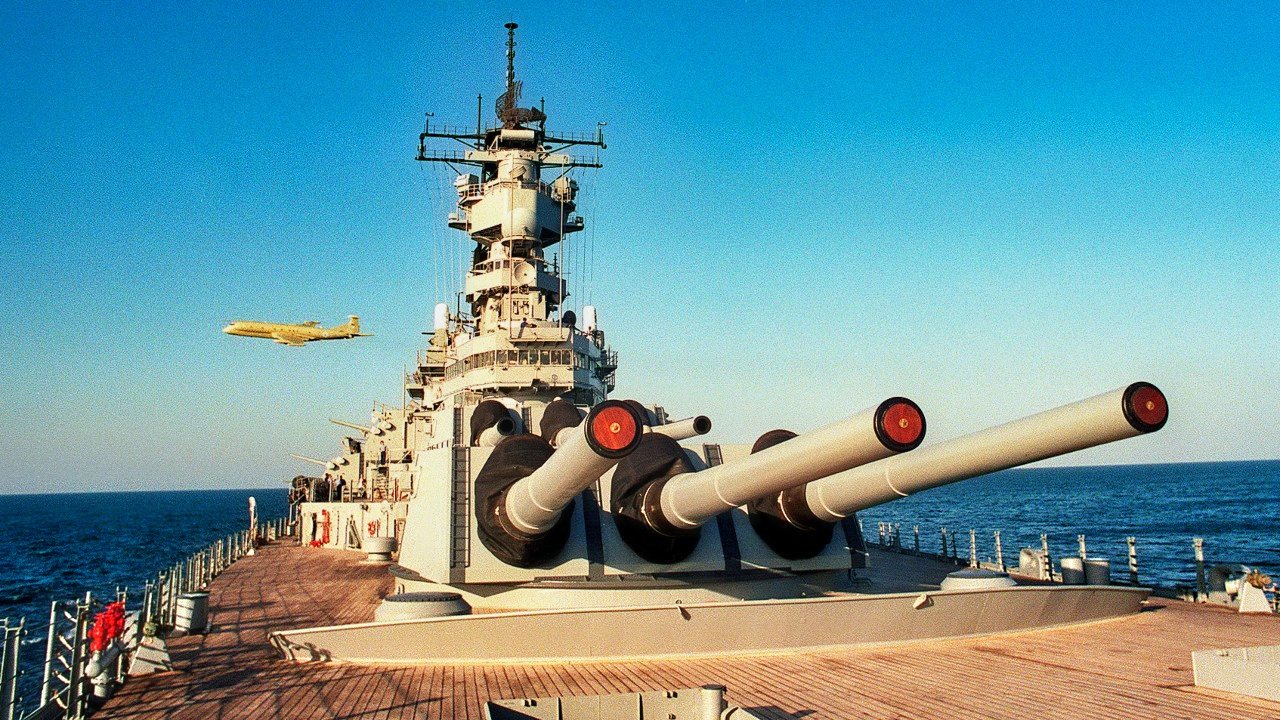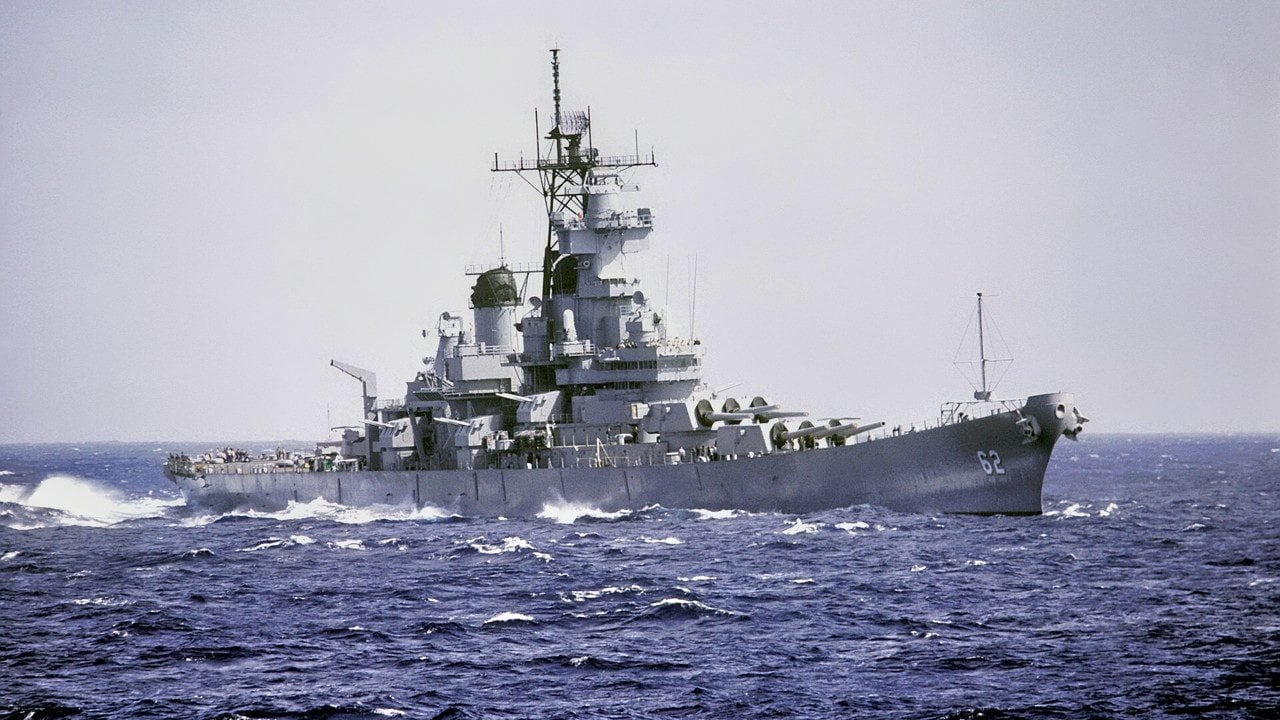Montana-Class: The 70,000 Ton Battleship The U.S. Navy Refused to Build
The Montana-class battleships, planned by the U.S. Navy during World War II, were designed to be the most powerful and heavily armored battleships in history.
Summary: The Montana-class battleships, planned by the U.S. Navy during World War II, were designed to be the most powerful and heavily armored battleships in history.

-With twelve 16-inch guns, advanced anti-aircraft defenses, and armor up to 18 inches thick, these steel giants would have outclassed any warship of the era, including Japan's Yamato-class.
-However, the shift in naval warfare strategy toward aircraft carriers meant that resources were redirected, and the Montana-class never saw completion.
-Despite their immense potential, the rise of airpower at sea made the Montana-class obsolete, marking a pivotal shift in naval priorities during WWII.
The Montana-class Battleship Would Have Been Amazing
Warfare results in constant innovation and rapid enhancement of technology. The Second World War was, aside from being a horrific bloodbath, an event in which technological capabilities were furthered in rapid succession as never before. In warfare, too, many ideas never gain traction as they might have during a period of relative peace. Such was the case of the Montana-class battleship.
The United States Navy intended for the Montana-class battleships to consist of six battleships. These behemoths were to be the USS Montana (BB-67), USS Ohio (BB-68), USS Maine (BB-69), USS New Hampshire (BB-70), USS Louisiana (BB-71), and the USS Missouri (BB-72), which was the same name of the Iowa-class battleship.
Steel Beasts of a Battleship
These steel beasts would have completely redefined America’s battleship capabilities. At full load, these boats would displace a whopping 70,000 tons. They would have come equipped with twelve 16-inch .50 caliber Mark 2 guns arranged in four triple turrets.
Had these warships been put to sea, and if they had engaged in combat during World War II, the Montana-class battleships would have had the heaviest broadside of any battleship ever designed.

Aside from the main armament, the Montana-class included twenty 5-inch .38-caliber guns for anti-aircraft defense. The Navy contemplated adding more anti-aircraft guns. This was because the Navy at that time was dealing with Japan’s prolific use of Kamikaze attacks where Japanese pilots flew their planes into American warships below, causing massive amounts of damage. While the Navy had become proficient at defending against these, frankly, insane Japanese attacks, it was still difficult to stop them.
A single Montana-class would have possessed the strongest armor of any battleship ever, too. It had a belt armor of sixteen inches, deck armor of up to six inches, and turret face armor of up to eighteen inches.
As for her speed, the Montana-class could top out around twenty-eight knots, making it only slightly slower than the famous Iowa-class battleships. Although, this is because of the Montana-class battleship’s much larger displacement.
And, given the kind of armor and armaments this boat was supposed to have, it would have been far more potent than even the mighty Iowa-class.
Before the outbreak of WWII, the United States Navy, like the rest of the world’s great navies, was obsessed with battleships before the U.S. Navy was bitten by the aircraft carrier bug. The Montana-class battleship was a response to evolving naval doctrines and the arms race in battleship design that defined the interwar years.
A year before the Americans were dragged, kicking and screaming, into WW2 by the Japanese, the Navy began planning for battleships that could match, or possibly surpass, any potential adversary’s battleship.
Specifically, the Americans wanted to surpass the Japanese Yamato-class battleships.
What is a Battleship?
In essence, the Montana-class battleships were designed to be the primary embodiment of naval firepower and armor to outclass anything else on the High Seas. But these glorious boats, on paper, never came to fruition.
The war forced a sudden strategic shift away from battleships to aircraft carriers.
Battles between the United States and Japan over distant Pacific islands, like Midway, solidified the notion that flat tops beat battlewagons every time. Airpower at sea, rather than firepower, was the wave of the future for the U.S. Navy.
Despite being the arsenal of democracy at the time, the United States still needed to prioritize where to send large amounts, though still finite, resources for the war effort. Instead of spending all that time, money, and manpower, building the Montana-class boats, the Americans built carriers, smaller ships, and submarines, which ultimately won the Pacific Theater of the Second World War.
Thus, the Montana-class battleships were not very cost-effective. Although, they’d have been an interesting platform to see in action.
Author Experience and Expertise: Brandon J. Weichert
Brandon J. Weichert, a National Interest national security analyst, is a former Congressional staffer and geopolitical analyst who is a contributor at The Washington Times, the Asia Times, and The-Pipeline. He is the author of Winning Space: How America Remains a Superpower, Biohacked: China’s Race to Control Life, and The Shadow War: Iran’s Quest for Supremacy. His next book, A Disaster of Our Own Making: How the West Lost Ukraine, is due October 22 from Encounter Books. Weichert can be followed via Twitter @WeTheBrandon.
All images are Creative Commons or Shutterstock.
From the Vault
Russia Freaked Out: Why the U.S. Navy 'Unretired' the Iowa-Class Battleships
Battleship vs. Battlecruiser: Iowa-Class vs. Russia's Kirov-Class (Who Wins?)


